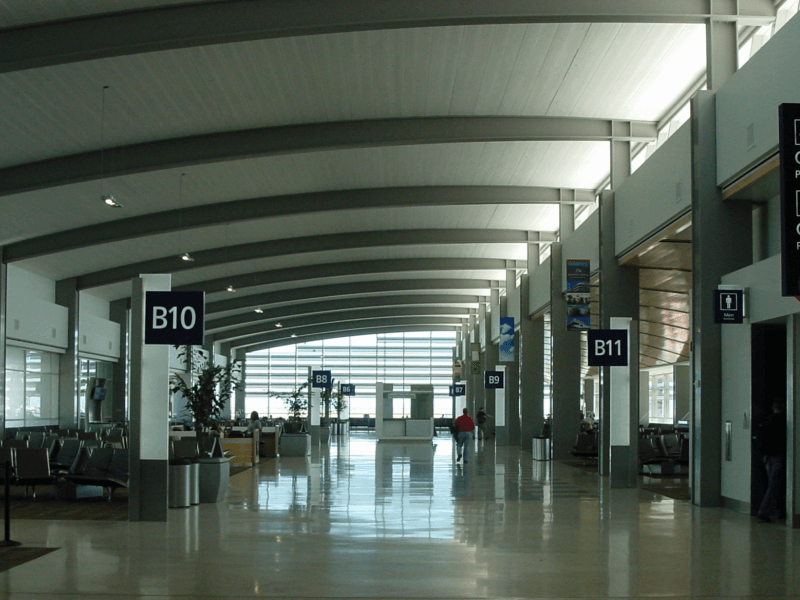Sacramento International Airport
Sacramento International Airport is a civilian airport located 16 kilometers northwest of downtown.
The airport is served by 10 airlines. It has two runways and two terminals with 32 boarding gates. In each of the terminals, passengers have free Wi-Fi access to the Internet, more than 20 cafes and restaurants, car rental and parking.
To brighten up the waiting time of passengers, in each of the terminals they have the opportunity to visit art exhibitions.
A developed network of airports allows you to travel between California cities on the planes of American airlines United Airlines, Delta Airlines, etc. The flight from San Francisco to Los Angeles takes 1 hour 15 minutes, to San Diego – 1.5 hours.

With travel time to and from the airport, pick-up, drop-off, and baggage claim procedures, as well as lower ticket prices, Amtrak’s regional trains along the Pacific coast compete with aviation. Their main advantages are comfortable carriages, interesting views from the windows.
Rent a Car
The most convenient way to get around California is by car, where you can easily get to the most interesting places in the state and admire the famous California landscapes. And magnificent roads, developed roadside service, low cost of rental and gasoline make the trip a real pleasure.
You can rent a car at the offices of local (LA Rent-a-Car, etc.) or international rental companies (Avis, Hertz, Sixt, etc.), which are available at airports and most cities in the state.
At California airports, the rental price includes airport and tourist taxes. It can be more profitable to take a taxi to the city and take the car there. Hint to the office worker that the price is too high – there is an opportunity to get a discount.
Despite the large number of cars and heavy traffic at the beginning and end of the working day, driving is not particularly difficult. The marking of street parking lots differs from the European ones – they are marked with a curb painted in different colors. Green allows temporary parking within a certain time (usually 30 minutes).
Disabled spaces are marked in blue. White allows you to leave the car for an arbitrarily long time, but red curbs should always remain free. Parking in the centers of large cities must be paid through parking meters – in cash or by credit card.
Transport
Intercity buses from Amtrak, Greyhound and others are no less comfortable, and the fare is even lower. They are very convenient even for long trips from Los Angeles to Las Vegas (450 km), to the Grand Canyon (760 km) and to other places where there are no railroads.

Tickets are sold at the box office at bus stations, bulky luggage should be left next to the bus when boarding – the driver will load it into the luggage compartment.
The most common type of public transportation in California is buses that run on urban and suburban routes. Suburban railway communication is well developed.
The only subway in California is in Los Angeles. But in almost all major cities there are high-speed trams. So, Muni Metro in San Francisco, is a symbiosis of conventional and high-speed trams running underground in the business center of the city.
The territory of California – 1240 km from south to north and 400 km from east to west – includes several regions that differ in climate, landscape and natural beauty. The most populous, sunniest and most attractive part of the state is its Pacific coast from San Diego to San Francisco with hot summers and mild winters.
Here you will find seductive Los Angeles, bohemian Beverly Hills and Hollywood, world-famous long sandy beaches and small towns inhabited exclusively by millionaires.
Significant areas in the south are covered by the Mojave Desert. The scorching heat of the day, combined with cold nights and rare rains, almost deprived it of any vegetation and rewarded it with “alien” landscapes. In the Death Valley National Park located here, the lowest point in the United States (86 m below sea level) and the “hottest” place in North America (recorded temperature +56.6 ° C) are located. Another unique feature of the valley is the large rocks that are able to move on their own.
